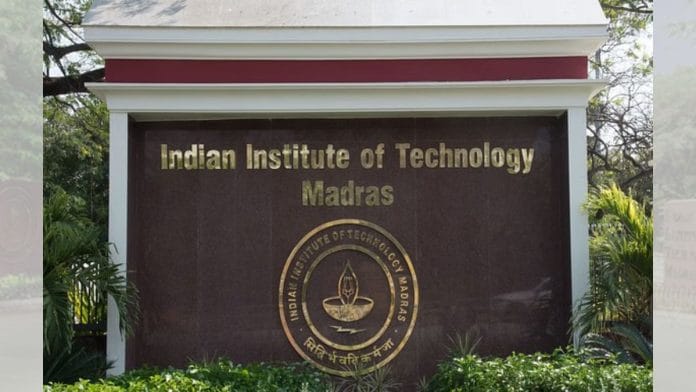New Delhi: Three Indian Institutes of Technology (IITs) were in the top 200 of the Quacquarelli Symonds (QS) World University Rankings 2026, which also showed Indian institutions lagging on key indicators, such as the international student ratio and faculty-student ratio.
Released Friday, the latest QS World University Rankings saw IIT-Delhi emerge as the top-ranked Indian institution at 123, marking a jump of 27 places from the previous year.
IIT-Madras broke into the top 200 for the first time, climbing 47 places to secure the 180th position. On the other hand, IIT-Bombay’s rank declined to 129 from 118 the previous year.
Overall, the Massachusetts Institute of Technology (MIT) in the US was the world’s top university for the 14th consecutive year. While Imperial College London remained in second place, and Stanford University remained in third.
Indian institutes performed well on indicators such as employer reputation, with five institutions featuring in the global top 100, including the IITs in Delhi, Bombay, Madras, and Kanpur, as well as Symbiosis International.
Eight institutions ranked in the global top 100 for citations per faculty.
Two universities—the University of Delhi and the University of Mumbai—also performed well in employment outcomes, securing spots in the top 100.
However, the rankings show Indian institutes still lag in attracting foreign students, with no Indian university currently featuring in the global top 500 for this metric.
Even India’s top-performing research institutions, such as the IITs, which excel in indicators like academic reputation and citations per faculty, do not rank among the world’s top 1,200 for international student ratio.
Also Read: Road to expansion clear, but 3rd-gen IITs are caught in loop of low enrolment & falling placements
Faculty-student ratio & international students
The QS rankings are based on nine indicators: academic reputation, employer reputation, faculty/student ratio, citations per faculty, international student ratio, international faculty ratio, international research network, employment outcomes, and sustainability.
This year they highlighted that 78 percent of Indian universities experienced a decline in their scores in the international student ratio indicator, while 63 percent saw a drop in their faculty-student ratio indicator.
On the international student ratio indicator, Amity University in Noida ranks highest among Indian institutions, at 540th position with a score of 34.9. “This highlights a key area for future focus as India seeks to strengthen its global engagement and position itself as a truly international education destination,” the QS statement said.
In case of faculty-student ratio, O.P. Jindal Global University (JGU) is the only Indian university to feature in the global top 350, ranking at 257 this year—an improvement of 25 places since last year.
“However, 63 percent of Indian universities saw a decline in this indicator, highlighting one of the sector’s most complex structural challenges. Faculty-student ratio is a critical measure of academic capacity and educational quality,” the statement added.
“As Indian universities work to expand access and enrollment, scaling faculty recruitment accordingly remains a persistent challenge—especially in the public sector, where resource constraints and regulatory frameworks can slow the pace of hiring.”
Jessica Turner, CEO of QS, said Indian universities are clearly making progress in strengthening their global research footprint and advancing in areas such as citations per faculty, sustainability, and international research networks. “But the rankings also highlight the next frontier—attracting more international students and faculty, and building academic capacity to support quality at scale,” she said.
How IoEs & other institutes fared
Among institutions showing improvement, IIT-Kharagpur climbed to 215 from 222 last year. IIT-Kanpur rose to 222 from 263, while IIT-Guwahati improved its position from 344 to 334.
Some institutions recorded a drop in rankings, including the Indian Institute of Science (IISc) Bangalore, which fell to 219 from 211 last year. IIT-Roorkee slipped from 335 to 339, while Anna University dropped from 383 to 465. Delhi University, meanwhile, maintained a status quo at 328.
Six of India’s 11 Institutions of Eminence (IoEs)—both public and private—improved their positions this year, including IIT Madras. Launched by the Union government in 2017, the IoE scheme was aimed at propelling Indian higher education institutions into top global rankings.
University of Delhi, University of Hyderabad, and Banaras Hindu University retained their previous rankings. Among private universities, Birla Institute of Technology and Science (BITS) stood at 668th.
Meanwhile, eight new Indian universities debuted on the rankings this year. These include IIT-Gandhinagar, Kalinga Institute of Industrial Technology, Lovely Professional University, Shiv Nadar University, and Ashoka University. As a result, according to the QS statement, India now has 54 institutions in the rankings, making it the fourth most represented country—behind only the US (192), the UK (90), and Mainland China (72).
Dr Ashwin Fernandes, QS Regional Director for the Middle East, Africa, and South Asia, said the addition of eight Indian universities—more than any other country—signals an encouraging trajectory. “With increasing global engagement, investment in research, and a sharp focus on employability, Indian universities are beginning to align more closely with the expectations of a rapidly evolving knowledge economy,” he said.
(Edited by Sanya Mathur)
Also Read: JEE Advanced 2025 results: IIT cutoffs drop to three-year low






